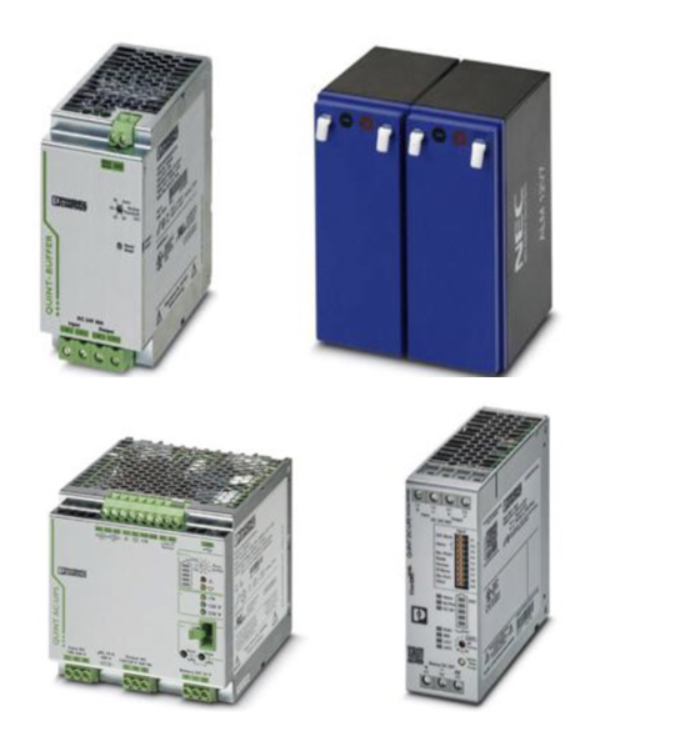UPS Power Supply

A UPS power supply, or uninterruptible power supply, is a vital component in electronic systems. The primary role of any UPS is to provide short-term power when the input power source fails. The most common configuration of UPS systems, line interactive UPS systems, correct minor power fluctuations without switching to battery power. They use internal circuitry to maintain straight AC power. This means that sensitive equipment won't be affected by slight voltage changes or short interruptions in power. When a full power failure occurs, battery power is supplied instantaneously to all connected devices, allowing them to either stay online or shut down gracefully, depending on what the user has preprogrammed.
For installations that require a high degree of reliability, such as control centers and network operations, an online UPS is the right choice. Offering continuous power from its batteries, seamless switching, and a much higher degree of isolation from the utility grid, an online UPS protects sensitive electronics from power disturbances. The performance of these systems is crucial to maintaining the uptime of reliable power needed for the kinds of electronics that always have to be on, like the kinds of devices we use in home offices, commercial buildings, and industrial sites.
More Information about Uninterrupted Power Supplies
Different sorts of uninterruptible power supply systems exist, such as offline/standby variants, line-interactive models, and online/double-conversion alternatives. Offline systems, sometimes called standby, provide simple power protection and switch to battery power after a power outage hits. By automatic intervention, line-interactive systems handle voltage deviations or spikes that can slightly disturb or distort the power supply; if the distortion gets too bad, the line-interactive system will switch over to battery power. These line interactive battery backups can usually fit into a convenient nook in an office space, such as under a desktop.
When selecting backup power equipment, it is crucial to consider power quality. Inadequate power supply in terms of voltage, frequency, and waveform characteristics can potentially damage sensitive equipment, making the use of a UPS unit essential to ensure clean and uninterrupted power during outages.
FAQs
Do standby UPS systems provide automatic voltage regulation as well as surge protection for sensitive electronic equipment and electronic devices?
No, standby UPS systems typically provide surge protection but do not offer automatic voltage regulation, making them less suitable for sensitive electronic equipment compared to line-interactive or online UPS systems.
UPS Basics: Uninterruptible Power Supplies
An Uninterruptible Power Supplies (UPSs) are electrical devices that provide backup power via a battery to a load when regular utility power has been lost. Depending on the UPS, some can provide protection against voltage spikes or power surges that help protect any equipment that is connected to the UPS. UPSs are not intended to be used for long periods of time. Typically, they are only used for short periods of time to provide critical backup power until an alternative power source can be provided. Online UPS systems use double conversion technology to provide the highest level of protection, isolating equipment from raw utility power.
Sealed lead acid batteries, known for their leak-proof nature, are commonly used in replacement UPS battery cartridges.
UPSs allow any electrical equipment connected to it to continue to run in the event of a power outage. For example, control cabinets in industrial applications can be kept running, making sure that the critical monitoring and controlling functions are not interrupted. UPSs allow enough time to save data on a computer that might be in jeopardy, due to a sudden power outage. UPSs can also act as a bridge while the backup generator is coming online and synchronizing with the electrical system. UPS systems are crucial for supplying power to connected devices, ensuring they remain operational during outages.
Power quality is essential for electrical power, emphasizing the importance of voltage, frequency, and waveform characteristics in the electrical power supply.
Standby or offline UPSs work with equipment that is typically energized by utility power. When the voltage being received by the UPS falls below a certain level, the UPS switches the connected equipment to the inverter connected on the UPS. At this point, the UPS will begin providing backup power from the battery.
Online UPSs works with equipment that is constantly drawing power from the battery through the inverter, so no switching is necessary. In this case, utility power is only being used to keep the battery charged. This allows for much more seamless power usage during an outage. Proper maintenance and selection of the appropriate UPS system are vital for ensuring reliable performance and protection of connected equipment.

